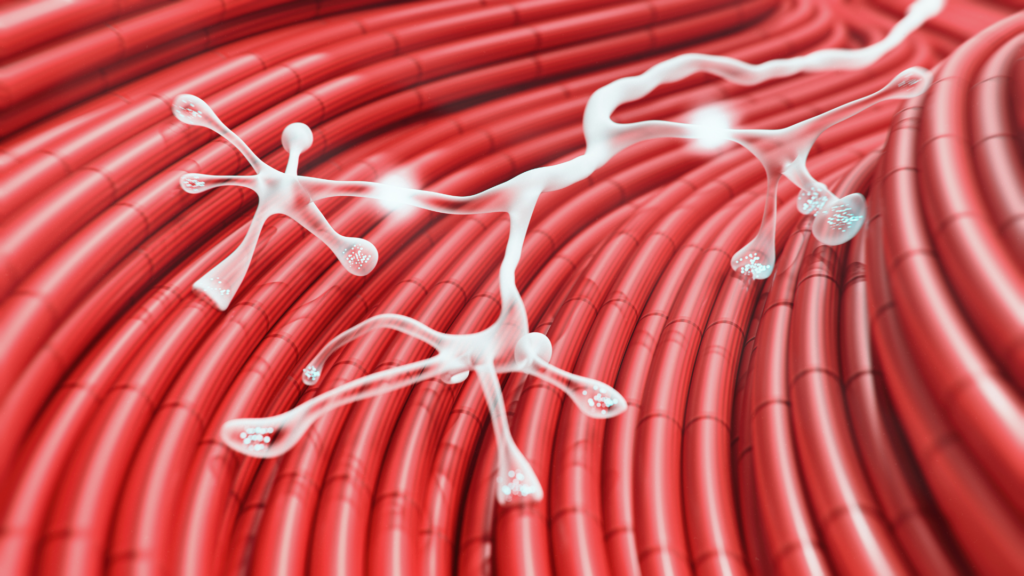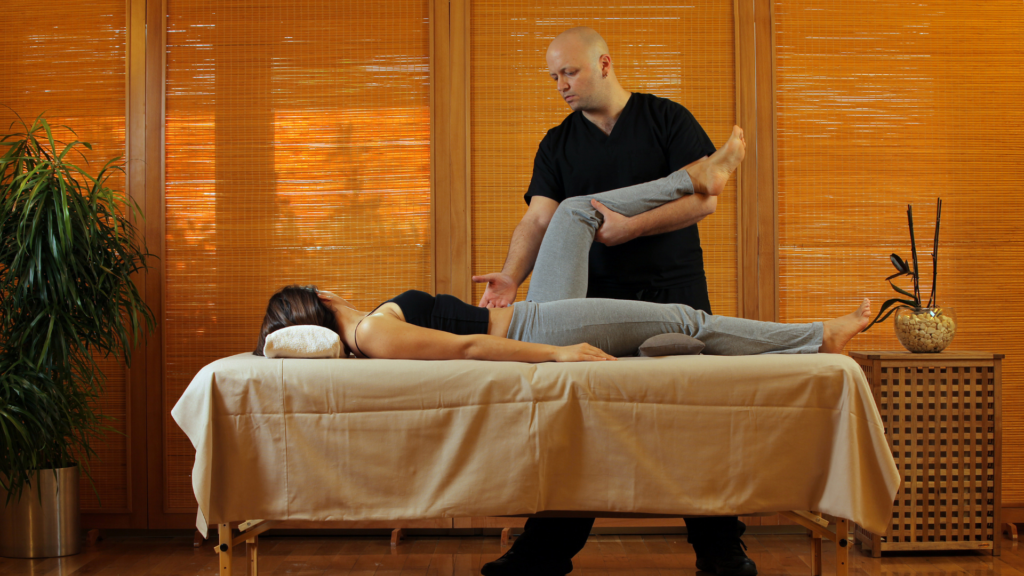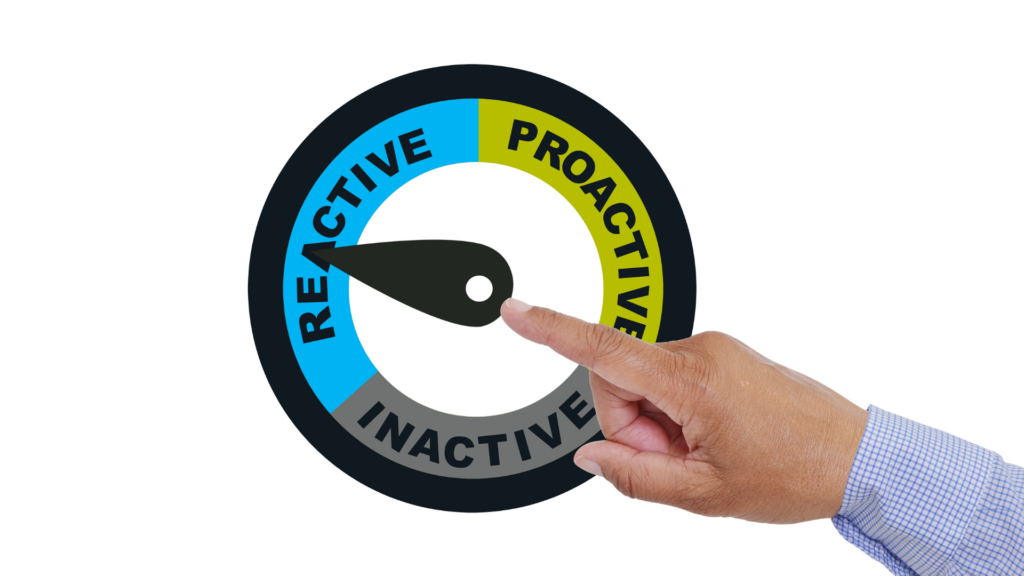Table of Contents
Exercise Daily – don’t know anything about Reactive Neuromuscular Training (RNT)? Don’t worry, you will learn everything about RNT here. So, let’s get started.
The term “stability” has made its way into the non-medical/rehabilitation community’s vocabulary.
The fitness industry frequently refers to stability. Although it is more likely to relate to strength and stamina than it is to motor control.
So, from the standpoint of “rehab,” how can one enhance their “dynamic stability”? Reactive Neuromuscular Training is one method of doing this.
Mike Voight first described Reactive Neuromuscular Training in 1990 as:
a broad term that refers to a number of rehabilitation treatments that aim to regain dynamic stability and functional motor to a damaged joint
Since then, the term has evolved to include a variety of other terms. Later on, he went on to elaborate on his definition.
He further explained that the primary goal of the RNT program is to make the cognitive process of processing and incorporating peripheral sensations acquired by the central nervous system (CNS) into proper motor responses as smooth as possible.
Reactive Neuromuscular Training (RNT)

According to Voight, the core premise of what we are doing with RNT is delivering input to the brain from the rest of the body in order to excite the central nervous system in such a manner that timing, sequencing, and rhythm are improved. In other words, it helps you to have better motor control.
When used as a corrective technique, RNT enhances motor control in a distinctive way, which is one of the reasons it is so successful.
We will accomplish our transformations by utilizing the “reactive” nature of the neurological system (thus the name Reactive Neuromuscular Training).
In nature, RNT and the method by which we may incorporate it have a significant benefit in that it not only feeds the nervous system but is also typically self-correcting in nature.
In other words, if the individual doing the specified movement is unable to do it correctly, they will be unable to complete it at all.
When it comes to coaching, self-corrective activities are quite beneficial. Since they save time and put the patient in a position to succeed.
It is truly a win-win situation. Therefore whenever we have the opportunity to incorporate self-correcting activities, we should.
How Does Reactive Neuromuscular Training (RNT) Work?

In order to assist us in moving around our surroundings, the nervous system contains a large number of default motor patterns that we may use.
These motor patterns save us energy and time since they do not necessitate a great deal of input and output from the brain. Because they are already established and can be performed with little or no intervention or thought.
Suppose I asked you to do something simple like a squat. You wouldn’t hesitate to do so without giving it much thought. It’s possible that your squat is excellent.
Alternatively, it may not be that wonderful. However, you already have a program that is pre-programmed to perform a squat.
While these motor programs are effective in the manner that they switch on and off the nervous system, it is important to recognize that if they are incorrect, they may be highly troublesome for the person using them.
The difficulty in altering a dysfunctional movement pattern is that once you have grooved a defective pattern into your body, you have produced something that no longer requires input from the brain in order to be accomplished.
Concept of Railway Track and Reactive Neuromuscular Training (RNT)

Movement patterns can be compared to railway tracks in certain ways. Train tracks are swift, efficient, and well-established. They are also inexpensive. They are extremely effective at transporting a certain type of vehicle along a specified path to a specific location.
The system, on the other hand, breaks down extremely fast when anything changes. For example, when the track is broken or covered with dirt or when a switch stops operating. The track, therefore, becomes worthless so will be Reactive Neuromuscular Training.
This is true for both movement patterns and posture. It is possible that if you have one that has not been utilized in a long time, your nervous system will not be able to access it properly.
If the movement pattern is flawed, to begin with, it will almost always result in a negative consequence. Furthermore, if there are a hundred recordings lined up side by side with no apparent rhyme or reason, the brain will be unable to determine which track to employ.
Train tracks should be straight, straightforward, and easy to access for everyone, and we want that to happen.
When it comes to railway tracks, one of the difficulties is that they are tough to create and that once you are on them, it is impossible to get off.
You are unable to alter your course and decide that you would want to take a random detour.
As a result, train lines are incredibly efficient for a certain purpose while being extremely inefficient in all other applications.
That is, in essence, what RNT is all about. Giving the body the appropriate stimulation at the appropriate moment allows it to “jump the tracks.”
What Exactly “Reactive” Means in Reactive Neuromuscular Training?

The moment we cross over to a new set of tracks that are more desirable, we may begin laying them down. If we groove the new pattern for sufficient time, it will become the default set of tracks.
Later on, the body will always resort to those tracks while we are not paying attention.
You can probably assume from the nomenclature that it involves some type of muscle and nervous system training for the muscles. Moreover, the neurological system governs those muscles.
But what exactly is “Reactive”? That refers to your body’s ability to respond in a timely manner.
Dynamic stability is not, by its very nature, a consciously controlled process. To maintain the stability of a bodily part in a fixed posture or within a course of movement.
It takes a lot of tiny muscles to keep it from swaying in and out of the optimum route. They all have to work together to do so by firing at the right time.
Moreover, for brief bursts to keep it stable.
Understand Reactive Neuromuscular Training (RNT) with Reference to Sci-fi Films
An analogy to what you would see in a sci-fi film is when a small spacecraft in deep space is attempting to navigate to a dock by releasing little bursts of gas in different directions to keep it stable—the same thing, except considerably quicker and with a far shorter burst.
To put it another way, what you’re actually attempting to do is teach your body to respond to situations by responding in a reactive manner that is controlled by your conscious mind.
When it comes to rehabilitation procedures, the RNT program is the umbrella term for a wide range of treatments. It restores dynamic stability and fine motor control to a damaged joint.
By incorporating proprioceptive and balance training into standard rehabilitation, the RNT approaches are designed to aid in exercise.
Reactive Neuromuscular Training (RNT) – FAQs
What is Reactive Neuromuscular Control?
In contrast to traditional rehabilitation, reactive neuromuscular training (RNT) is designed to assist bridge the gap left by traditional therapy.
One can do it by including proprioceptive and balance training in an effort to enhance a more effective return to activity.
What Exercises Neuromuscular Control?
Exercises in neuromuscular control enable the body to generate force. Moreover, also dynamically stabilizing and reducing external forces. Basically allowing the body to maintain balance while moving.
It is not necessary to have neuromuscular control when performing traditional machine-based strength training.
How Do You Improve Neuromuscular Control?
It is possible for the training of one limb to result in an increase in the strength of the contralateral, non-exercised limb, called cross-exercise.
This type of training has the potential to improve neuromuscular control by targeting brain pathways that are related to abnormal movement patterns in a targeted manner.






